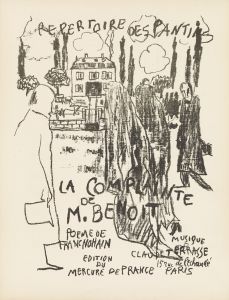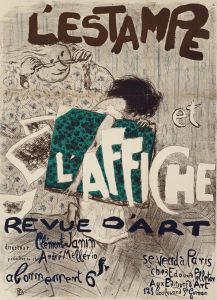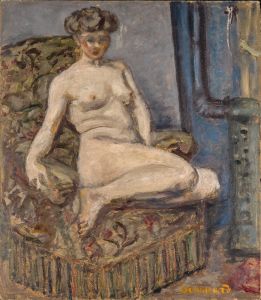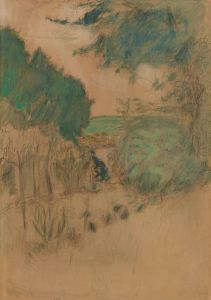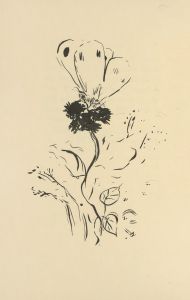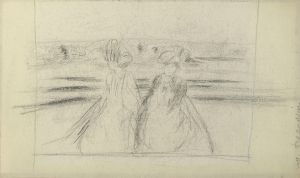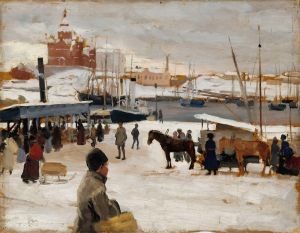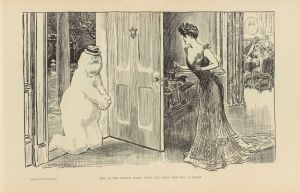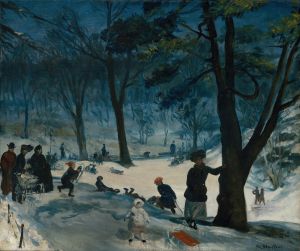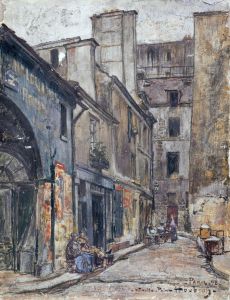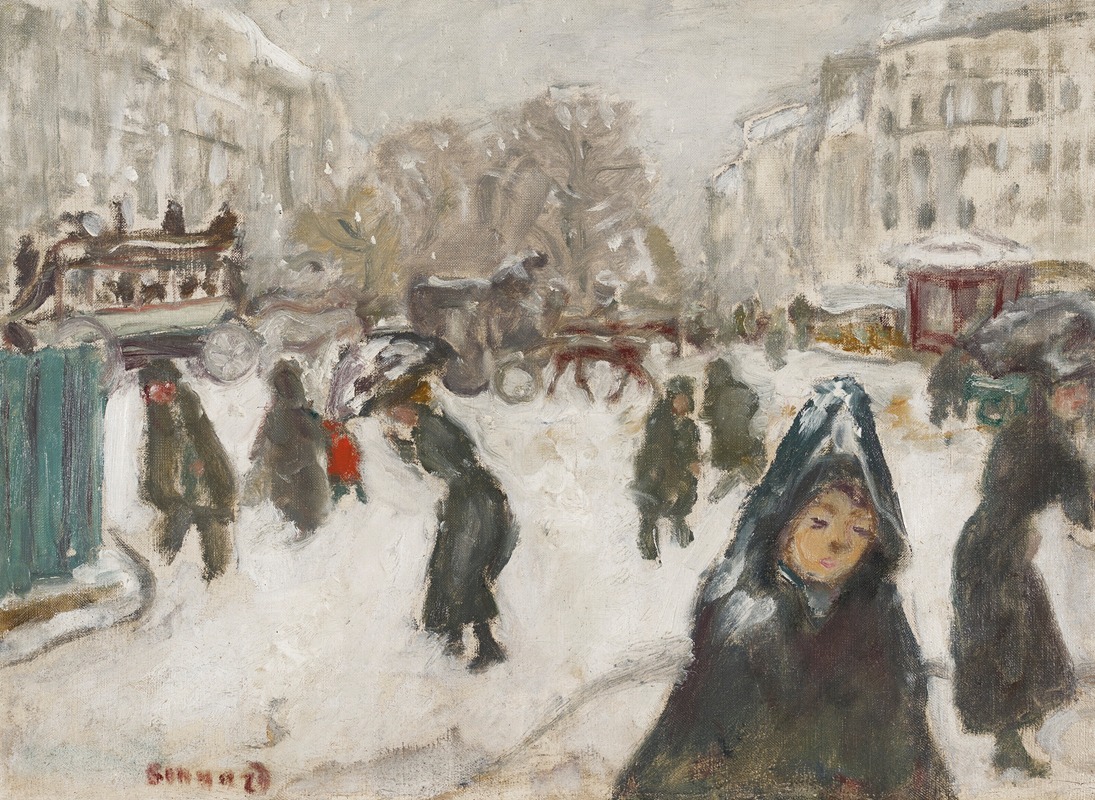
Rue sous la neige
A hand-painted replica of Pierre Bonnard’s masterpiece Rue sous la neige, meticulously crafted by professional artists to capture the true essence of the original. Each piece is created with museum-quality canvas and rare mineral pigments, carefully painted by experienced artists with delicate brushstrokes and rich, layered colors to perfectly recreate the texture of the original artwork. Unlike machine-printed reproductions, this hand-painted version brings the painting to life, infused with the artist’s emotions and skill in every stroke. Whether for personal collection or home decoration, it instantly elevates the artistic atmosphere of any space.
"Rue sous la neige" (Street under the Snow) is a painting by the French artist Pierre Bonnard, created in 1895. Pierre Bonnard (1867-1947) was a prominent figure in the Post-Impressionist movement and a founding member of the avant-garde group known as Les Nabis. His work is characterized by its vibrant color palette, intimate domestic scenes, and innovative use of perspective.
"Rue sous la neige" exemplifies Bonnard's ability to capture the quiet beauty of everyday life. The painting depicts a tranquil street scene blanketed in snow, showcasing Bonnard's skillful use of color and light to convey the serene atmosphere of a winter's day. The composition is marked by its subtle interplay of light and shadow, with the snow-covered ground reflecting the soft, diffused light of the overcast sky.
Bonnard's technique in this painting involves the use of loose brushstrokes and a muted color palette, which together create a sense of calm and stillness. The artist's attention to detail is evident in the delicate rendering of the snow-laden branches and the gentle curves of the street. The figures in the painting are depicted in a somewhat abstract manner, blending into the background and emphasizing the overall mood rather than individual identities.
The painting is also notable for its composition, which draws the viewer's eye along the winding street and into the distance. This use of perspective creates a sense of depth and invites the viewer to imagine the quiet, contemplative walk through the snowy landscape. Bonnard's ability to evoke such a strong sense of place and atmosphere is a testament to his mastery as a painter.
"Rue sous la neige" reflects Bonnard's broader artistic interests and influences. As a member of Les Nabis, he was influenced by the Symbolist movement and the work of Paul Gauguin, who encouraged a more expressive and symbolic use of color and form. Bonnard's work often explores themes of memory and perception, and "Rue sous la neige" can be seen as an exploration of the ephemeral beauty of a fleeting moment in time.
The painting is part of Bonnard's early body of work, created during a period when he was experimenting with different styles and techniques. This period was crucial in the development of his unique artistic voice, which would later be characterized by his vibrant use of color and his focus on intimate, everyday scenes.
"Rue sous la neige" is housed in the Musée d'Orsay in Paris, which holds an extensive collection of Bonnard's work. The museum's collection provides valuable insight into the artist's development and his contributions to the Post-Impressionist movement. Visitors to the Musée d'Orsay can view "Rue sous la neige" alongside other works by Bonnard and his contemporaries, gaining a deeper understanding of the artistic context in which he worked.
In summary, "Rue sous la neige" is a significant work by Pierre Bonnard that captures the quiet beauty of a snowy street scene. Through his use of color, light, and composition, Bonnard creates a serene and contemplative atmosphere that invites viewers to appreciate the simple, fleeting moments of everyday life. The painting is an important example of Bonnard's early work and his contributions to the Post-Impressionist movement.






